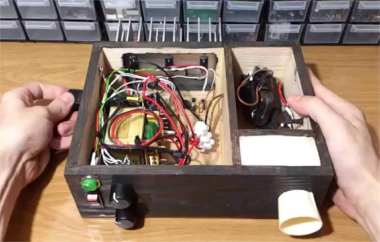
A High Voltage Power Supply (HVPS) refers to a power supply device capable of delivering high voltage output, and it has widespread applications in modern electronic devices, industrial control, scientific experiments, and medical equipment. With the continuous advancement of technology and increasing industrial demands, the design of high voltage power supplies is gradually evolving towards higher efficiency, precision, miniaturization, and intelligence. This article will delve into the definition, working principles, characteristics and advantages, as well as the applications of high voltage power supplies.
Catalog
I. What is a High Voltage Power Supply?
I. What is a High Voltage Power Supply?
A high voltage power supply typically refers to a device capable of outputting high voltages (ranging from several hundred volts to thousands of volts or even higher). It is primarily used to meet the specific requirements of voltage stability, precision, and safety in various applications. Depending on the voltage type and usage scenario, high voltage power supplies are categorized into DC high voltage power supplies, AC high voltage power supplies, and pulsed high voltage power supplies, among others. These different types play important roles across a variety of industries, particularly in high-energy physics research, medical equipment, precision testing, and industrial manufacturing.
II. Working Principle
The working principle of a high voltage power supply generally includes the following main steps:
· Input Rectification and Filtering: The input AC or low-voltage DC power is rectified and filtered to provide a smooth DC voltage, forming a stable input foundation for the subsequent voltage boosting process.
· Voltage Transformation and Boosting: Voltage is increased via a transformer or voltage multiplier circuits (such as a pulse forming network, PFN). Modern high voltage power supplies often utilize high-frequency switching technology, with digital control and feedback adjustment to precisely control the output voltage.
· Control and Feedback Regulation: Advanced control circuits and feedback mechanisms (such as PWM modulation, phase-shifting control, and soft-switching technology) are used to continuously monitor the output voltage and current in real-time. These systems automatically adjust to ensure stable and safe high voltage output.
· Protection Features: High voltage power supplies are typically equipped with multiple protection measures such as over-voltage, over-current, short-circuit, and temperature protection to ensure that the device can safely shut down or switch modes under abnormal conditions, preventing damage to components or harm to operators.
III. Features and Advantages
· Research and Experiments: In particle accelerators, nuclear physics experiments, and high-energy physics research, high voltage power supplies are crucial devices that provide the necessary high voltage environments for experimental setups.
· Industrial Manufacturing: High voltage power supplies have significant applications in high-tech industries such as plasma processing, ion implantation, electron beam processing, X-ray equipment, and lasers.
· Medical Equipment: Medical imaging equipment (such as X-ray machines, CT scanners) and some radiation therapy devices rely on high voltage power supplies for precise control and stable output.
· Semiconductors and Microelectronics: In the semiconductor manufacturing and microelectronic component testing industries, high voltage power supplies are used to drive and test the performance and reliability of small electronic components.
IV. Conclusion
As a vital foundational equipment in the fields of electronic components and advanced manufacturing, high voltage power supplies' stability, precision, and efficiency make them indispensable core components in numerous applications. With the ongoing adoption of intelligent, miniaturized, and energy-efficient technologies, the design concepts and manufacturing processes of high voltage power supplies are undergoing revolutionary changes. In the future, by continuously introducing new technologies and optimizing system designs, high voltage power supplies will bring safer, more efficient, and intelligent power solutions to various industries, driving continuous upgrades in the electronic components industry and the entire manufacturing sector.




